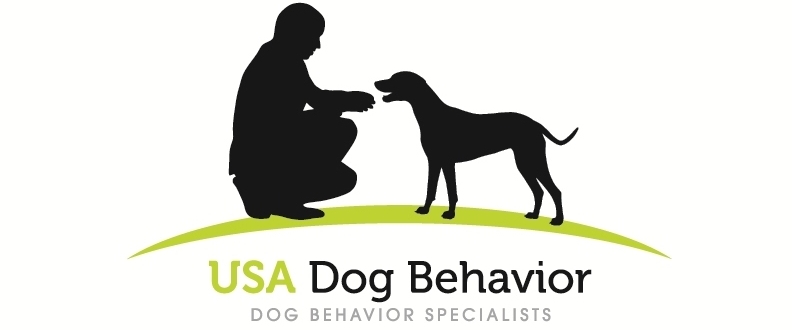You Can’t Force a Dog to be Unafraid (Ditto for Humans)
© 2018 Scott Sheaffer, CDBC, CBCC-KA, CPDT-KA, USA Dog Behavior, LLC
In your mind’s eye, I want you to imagine that you are sitting next to a passenger on an airplane who is really afraid of flying (known as aviophobia - maybe this is you). I’m talking sweating, trembling, fast breathing, death grip on the armrest, etc. If you’re a relaxed flier, sitting next to someone like this can really be annoying. You try to tell the person that you’ve been flying for 28 years and nothing bad has ever happened to you. You tell this extremely fearful flier that flying is the safest form of transportation on earth.
However, you notice this person is absolutely not listening to you. In fact, this individual hasn’t heard a word you’ve said. Why doesn’t this person listen to your calm and informed voice? Maybe you should just smack this Nervous Nellie really hard and force this individual to get under control - but, of course, you know you can’t make someone relax.
“What should we do when our dog reacts aggressively or chooses to avoid something that he or she really fears?”
What’s going on with this flier is a fear reaction and is known as an anxiety attack. A sense of overwhelming fear and dread. This poor character’s body is filling with the hormone epinephrine (i.e., adrenaline) because his or her amygdala (i.e., survival center of the brain) is in overdrive. This person is absolutely not having a fun time at this moment and doesn’t want to have this reaction. There is not much this flier can do about these physical manifestations once this level of anxiety begins.
Dogs are no different in how they react to things they really fear.
When a dog is considerably afraid of something (e.g., moving cars, visitors at the front door, loud sounds, thunderstorms, etc.) he or she is experiencing the same kind of anxiety that the human fearful flier is going through.
What confuses a lot of people is, in the majority of cases, dogs use aggression to scare away the things they fear. For example, a dog “greets” a visitor to a home with, shall we say, unfriendly and intense barking that doesn’t stop. This dog is not protecting anyone; he or she is afraid of the visitor and wants that person to leave or at least get further away. This dog has learned to be afraid of visitors for a number of possible reasons and is essentially experiencing an anxiety attack complete with a rush of adrenaline, the same adrenaline response that humans experience.
Dogs can also react with avoidance to things they fear. Instead of using aggression in an attempt to move scary things away from themselves, dogs will choose to move away from the thing they fear in order to create distance and feel safer.
Seeing a fearful dog’s barking at something it fears as disobedience and punishing those behaviors is exactly the same as seeing the fearful flier’s irritating nervous behaviors as simply bad manners. Neither species wants to feel this anxiety and can’t help themselves at that moment.
Here are the realities of high levels of anxiety for both humans and dogs:
Focus is solely on the scary event - awareness of other stimulus is virtually gone
Punishing the behaviors associated with high levels of anxiety only increases the anxiety
The experience is extremely uncomfortable
Once the anxiety attack begins, it escalates quickly and control of body responses is lost
It takes a period of time for the chemicals associated with anxiety (e.g., adrenaline) to wash out of the body once the scary event is over
What should we do when our dog reacts aggressively or chooses to avoid something that he or she really fears? To begin with, don’t punish the behaviors because that only increases the anxiety and don’t soothe the dog as it may reinforce or encourage fear behaviors.
Next, realize that what you are seeing are symptoms of the problem. The problem is the fear of something; it’s this fear that needs to be addressed. When the fear is addressed, the symptoms are normally eliminated. This is done by reintroducing the dog, in the proper way, to the thing that is feared. Simply treating the fear behaviors can be worse than doing nothing at all.
If your dog has things he or she is afraid of, seek the help of a qualified and properly certified dog behavior consultant. With patience, realistic expectations and consistency, these behaviors can be humanely addressed and improved.

